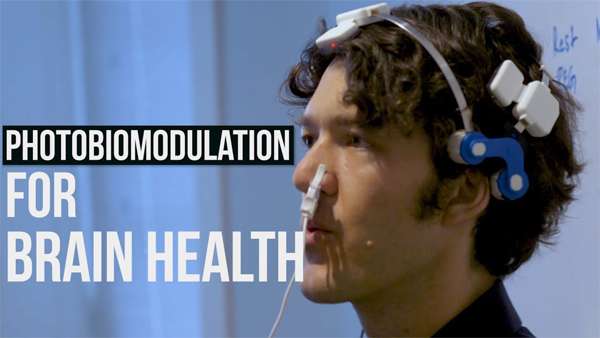What Is Structural Family Therapy?
Structural family therapy (SFT) is a type of family therapy that looks at the structure of a family unit and improves the interactions between family members. This approach to therapy was originally developed by Salvador Minuchin and has become one of the dominant forms of family intervention.
It suggests that dysfunctional family relationships can create stress and mental health problems for members of that family.
By addressing how members of the family relate to one another, the goal is to improve communication and relationships to create positive changes for both individual family members and the family unit as a whole.
Techniques
Structural family therapy relies on a technique known as family mapping to uncover and understand patterns of behavior and family interactions. During this process, the therapist creates a visual representation that identifies the family’s problems and how those issues are maintained through family dynamics.
This map diagrams the basic structure of the family, including the members of the family unit, their ages, genders, and relationships to one another. Aspects of the family observed during this process include:
- Family rules
- Patterns of behavior
- Family structure/hierarchies
This process frequently involves having family members themselves make their own maps describing their family. This not only boosts engagement in the therapeutic process but also gives a therapist a better understanding of how individual family members view their place within the family.
“Inviting family members to place the people and write their names inside a circle promotes a recognition of their mutual belongingness, an awareness that ‘these are us,'” explained Salvador Minuchin and his colleagues in Working With Families of the Poor.
After this initial process, the therapist observes the family during therapy sessions and in the home environment to track interactions and develop a hypothesis about the nature of the family’s relationships and interaction patterns.
Other techniques that may be used during SFT include:
- Joining: This technique involves the therapist developing a sharing and empathetic relationship to “join” the family.
- Boundary-making: The therapist will help the family identify, explore, and adopt clear boundaries and hierarchies within the family.
- Role-play: This involves acting out scenarios with the therapist’s guidance to look at certain patterns of behavior, identify dysfunction, and practice enacting alternatives.
- Reframing: In cognitive reframing, the therapist helps family members think about situations in different ways or see things from a different perspective. This can help people see experiences more positively.
What Structural Family Therapy Can Help With
Structural family therapy can be helpful for many families, but it is often recommended in situations or life events that involve:
- Families affected by trauma
- Divorce, separation, or remarriage
- Blended families
- Intergenerational families
- Single-parent families
- When one family member is affected by a mental health condition such as depression, anxiety, substance use, or post-traumatic stress disorder (PTSD)
- Families affected by chronic illness or disability
- Significant life changes such as changing careers, coming out, or moving
Any family that is coping with tension or conflict can potentially benefit from structural family therapy.
Vulnerable families faced with readjustments caused by shifting roles, changed norms, and new demands may benefit from this type of therapy, which has been shown to help empower and strengthen the entire family system.
Benefits of Structural Family Therapy
Families struggling with conflict can benefit from this type of therapy for many reasons. Some of the ways it may help include:
- Corrects imbalances within a family
- Establishes healthy boundaries
- Helps individuals improve their reactions to changing demands
- Improves communication
- Improves hierarchies within the family system
- Increases parental competence and satisfaction
- Improves relationship dynamics
- Reduces anger and resentment
SFT recognizes that many aspects of a family’s structure—including behavior patterns, routines, habits, and communication—can contribute to dysfunction. However, this approach to therapy can help families become more stable and improve support to individual family members who may need extra help by working to address these issues.
It can be beneficial for families that have dealt with some significant change in their lives. For example, this might involve the death of a family member, a change in the family structure through a divorce, or some trauma such as interpersonal violence or an accident.
Effectiveness
Structural family therapy has been shown to be effective at helping to address problems within families. Studies have also demonstrated the efficacy of this type of therapy.
- A 2019 study looking at the impact of family therapy on adolescents with mental health problems and their families found that therapy incorporating SFT offered several benefits. For example, the results indicated that after treatment, teens exhibited fewer externalizing and internalizing symptoms. In terms of other improvements, parents also reported increased family cohesion, better parental practices, and greater perceived efficacy as a parent.
- A small 2020 case study found that structural family therapy was an effective approach for improving marital mediation and reducing marital distress. However, the study authors noted that follow-up was needed to evaluate the long-term effects of treatment better.
Since its initial development in the 1960s, SFT has become one of the predominant family counseling theories.
Things to Consider
The amount of time needed for treatment to be successful often depends on the dynamics of the family and the situation they are facing. Some families may require relatively short-term treatment lasting a few weeks, while others may need more sessions lasting several months.
Participation and cooperation play an important role in the success of this type of treatment. However, some family members may be less cooperative or may refuse to participate altogether.
How to Get Started
If you think that structural family therapy may be helpful, ask your doctor if they can refer you to a professional who practices this type of treatment. You may also search an online directory to locate professionals in your area who specialize in SFT.
Some questions you might ask before you begin treatment include:
- How much experience does the therapist have with SFT?
- How long treatment is expected to take?
- How will progress be measured?
- What happens if some family members miss therapy sessions?
During your first appointment, your therapist will ask you questions to learn more about the problems you are facing and how your family currently functions. They may ask you to create a family diagram to describe relationships between members of the family and work to get a better view of the dynamic between individuals in the family.
After your initial session, your therapist will then be able to provide a fuller view of your family’s treatment plan and what else you can expect during treatment.
What most important about the structural family theory is that it provides a framework that helps “discover what stands in the way of a family reaching its goals,” and helps a therapist join with the family “in a vision of how to get from where they are to where they want to be” (Minuchin, Nichols & Lee, 2007, p. 9).
The use of structural mapping technique allows a family therapist “broaden the problem beyond individuals to the family system” (Nichols & Schwartz, 2006, p. 186). For example, if after observing the family’s interactions, a structural family therapist will develop a hypothesis that the mother and her teenage son are enmeshed and the father is disengaged, the interventions will be aimed at modifying the family structure by helping the couple get emotionally closer to each other; thus, promote change in the family structure when the husband becomes more responsive to his wife’s needs and the wife is able to express her needs more openly and directly.
By learning to better communicate with each other, spouses will be able to let go of resentment and hostility, thus, create an atmosphere of love and acceptance.
In addition, a structural therapist may promote change in every family member’s behavior by altering boundaries between husband and wife and realigning the spousal subsystem. Thus, instead of expecting the son to satisfy her need for emotional closeness, the mother will have her husband to satisfy this need. As a result, the teenager may stop rebelling against his mother in the struggle for freedom and autonomy, and may actually have a better relationship with both parents.
As for parental subsystem, with improved communication, both parents may establish a hierarchical structure and agree on mutually acceptable ways (that includes both consequences and rewards) to discipline their son.
What is incredible about this theory is that there are many ways to help families resolve their problems. A structural family therapist may as well concentrate on the dynamics between mother and her son or father and son. Looking at the family problems from circular perspective allows seeing how each family member is affected and affects other family members.
Unbalancing and changing the diffused boundaries within a mother-son enmeshed subsystem or rigid boundaries within a father-child disengaged subsystem may promote change in all family member’s behavior. Consequently, “altering the underlying structure will have ripple effects on all family transactions” (Nichols & Schwartz, 2006, p.173).
All parents and couples have complementary patterns, which when exaggerated, may lead to dysfunctional subsystems. For example, when a husband sees his wife being permissive, he becomes stricter when it comes to disciplining his children.
The mother undermines her husband’s authority by becoming protective and even more permissive with the children. Parents criticize each other’s way of handling the children and constantly fight. As a result, children get mixed messages from their parents and their behavior does not improve or gets worse.
When looking at the family interactions, a structural therapist may hypothesize that a cross-generational coalition consists of the mother and the children, with the father being excluded. Some of the goals of the structural therapy will be to create a hierarchical structure, “help parents function together as a cohesive executive subsystem” (Nichols & Schwartz, 2006, p.181).
It was interesting for me to understand how the structural family therapists define a normal family. According to Nichols and Schwartz (2006) all families face problems at one time or another, but what distinguishes a normal family is its ability to be flexible in order to adjust to environmental and developmental stressors.
Failure to realign diffused or rigid interpersonal boundaries may result in family dysfunction. Structural family therapy is “directed at altering family structure so that the family can solve its problems” (p. 181) by using their own resources.
Assessment
The first step will be “opening up the presenting complaint” ( p. 9), joining with the family by asking each member of the family to express their view of the problem, reflectively listening to their concerns and showing respect for each family member. Before the family members are ready to look at the problem from a circular perspective, they need to feel understood and accepted by their therapist. To make an assessment, information about the family through joining, accommodating and enactment techniques needs to be collected.
The second step of the family assessment model will be to “explore family pattern that maintains presenting problem” (Minuchin, Nichols & Lee, 2007, p. 11). A structural therapist will go beyond the presenting problem and I will start mapping the family’s underlying structure early in the session by paying attention to the seating order of the family members, “the boundaries that define affiliations, alliances, and coalitions begin to appear” (Minuchin, Lee & Simon, 2006, p.14).
As Nichols (2006) wrote “A structural assessment is based on the assumption that a family’s difficulties often reflect problems in the way the family is organized” (p.183). According to Minuchin, “the first, or perhaps most important, question a systemic therapist asks is: What are family members doing that helps maintain the identified patient’s symptoms?” (Minuchin, Nichols & Lee, 2007, p. 17). To answer this question, parents’ interactions, their parental styles and how their parental styles complement each other need to be analyzed.
It is also important to focus on a couple’s relationship, to explore how spouses relate to each other, how they address problems, how they agree and disagree.
The third step will be to explore parents’ past in order to understand how they developed their parental styles and ways of relating to each other.
A structural therapist will ask each of the parents to briefly talk about their childhood. Often family members think that their parental styles and ways of relating to others are unchangeable, but when they find out that they actually inherited them from their parents, they realize that they can unlearn old dysfunctional behaviors and learn new more effective ones (Minuchin & Fishman, 1981).
Goals and Interventions
The fourth step will be to redefine the problem and explore alternatives (Minuchin, Nichols& Lee, 2007). A structural therapist will use joining, accommodating and enactment not only to observe the family’s interactions but also modify them.
The family therapist will use reframing to help the family members see how their actions may maintain the problem. Then the structural family therapist will slowly start shifting the focus from the problem child to the spousal subsystem.
The interventions will be aimed at realigning interpersonal boundaries within a spousal subsystem. According to Minuchin (2007), spouses need to express their built up negative emotions before they feel closer to each other. The complementarity concept by asking both spouses to help each other to change can be used.
The following questions can be addressed to partners: “Your wife needs to know that you are a loving and nurturing father.” “How can you help your husband to be a father you want him to be?” “Can you give your wife permission to express her feelings of frustration?” This will open up an opportunity for the husband and the wife, who used to avoid a conflict, to learn to communicate with each other without fear of the confrontation.
When partners reestablish clear boundaries within the spousal subsystem, the structural family therapist will concentrate on reestablishing an effective hierarchical parental subsystem and creating clear generational boundaries in the family.
The realignment of boundaries within the wife-husband subsystem will affect the mother-son subsystem. For example, the wife’s need for emotional closeness will be satisfied by her husband, and not her son. Therefore, the emotional proximity between the mother and the son will change as well.
Second, the family therapist may intervene by encouraging parents to explore if their approach to changing their child’s behavior is effective or not. To challenge the family members’ unproductive assumptions, the family therapist may comment on the process: “I noticed that when dad started talking to his son about his behavior, you, mom, jumped in to protect your son. Do you think your husband can hurt your son?” Then the family therapist will guide the family to develop a more a balanced approach to parenting and disciplining their son.
The parents will discuss and agree on the ways they want to discipline their child. Alternative ways of disciplining their son, such as consistency, positive reinforcement, setting reasonable limits and expectations will be explored during the session.
The child’s longing for affection may also be addressed by saying” “Your son says that he feels that you love other children better than him. How would you respond to your son?” The father may tell his son that he loves him as much as he loves other children.
Then the family therapist may ask the son to help his stepdad express his love. The son may say that he wants to spend more time with his father, and they may schedule to do something fun at least once a week.
Finally, focusing on children, parents’ and stepparents’ subsystems by using the following reflections of feelings may help the son express his feelings about his dad and improve family’s relationship on overall: “It seems like it hurts you when your mom and step dad say negative things about your dad.” Hopefully, the mom will understand that by undermining her former husband’s authority, she is hurting her own son.
A final result of the counseling will be to see the family reorganizing its structure. The stepfather will earn his son’s respect and affection by emotionally connecting with his stepson.
Now the son is excited to talk to his stepdad about his interests. They have time together playing a game or going on a special outing. The father finds time to spend with other children as well. Even if it is only ten minutes a day, he devotes his attention and time to one of the children completely. The mother and father defined their son’s chores so there is no misunderstanding of what is expected of their son.
The partners are not afraid to discuss problems anymore. The brilliance of the structural family theory is that it provides a step-by-step outline for assessment, problem conceptualization, and structural change. When counseling a family, a family therapist needs to remember to treat a family as a unit and that “psychological symptoms are often related to family conflict,” as “human problems are interactional”.



